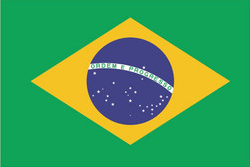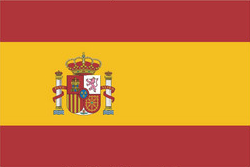 Europe’s own satellite navigation system has come a step nearer to completion today, with Galileo 9 and 10 which lifted off together at 02:08 GMT on 11 September (04:08 CEST; 23:08 local time, 10 September) from Europe’s Spaceport in French Guiana, atop a Soyuz launcher.
Europe’s own satellite navigation system has come a step nearer to completion today, with Galileo 9 and 10 which lifted off together at 02:08 GMT on 11 September (04:08 CEST; 23:08 local time, 10 September) from Europe’s Spaceport in French Guiana, atop a Soyuz launcher.
All the Soyuz stages performed as planned, with the Fregat upper stage releasing the satellites into their target orbit close to 23 500 km altitude, around 3 hours and 48 minutes after liftoff.
“The deployment of Europe’s Galileo system is rapidly gathering pace” said Jan Woerner, Director General of ESA.
“By steadily boosting the number of satellites in space, together with new stations on the ground across the world, Galileo will soon have a global reach. The day of Galileo’s full operational capability is approaching. It will be a great day for Europe.”
Two further Galileo satellites are still scheduled for launch by end of this year. These satellites have completed testing at ESA’s ESTEC technical centre in Noordwijk, the Netherlands, with the next two satellites also undergoing their own test campaigns.
More Galileo satellites are being manufactured by OHB in Bremen, Germany, with navigation payloads coming from Surrey Satellite Technology Ltd in the UK, in turn utilising elements sourced from all across Europe.
“Production of the satellites has attained a regular rhythm,” said Didier Faivre, ESA’s Director of Galileo and Navigation-related Activities. “At the same time, all Galileo testing performed up to now – including that of the ground segment – has been returning extremely positive results.
“And while the continuing deployment of Galileo remains our priority, along with exploitation of EGNOS – Europe’s already operational satellite navigation augmentation system – ESA is also looking farther ahead.
“With the European Commission, we are doing the technical work to ensure Galileo goes on ‘forever’ – locking in continuity of Europe’s navigation services into the long term, to meet performance on a par with the other global satellite navigation systems.”
Next year the deployment of the Galileo system will be boosted by the entry into operation of a specially customised Ariane 5 launcher that can double, from two to four, the number of satellites that can be inserted into orbit with a single launch.
About Galileo
Galileo is the Europe’s own global satellite navigation system. It will consist of 30 satellites and their ground infrastructure.
The definition, development and In-Orbit Validation phases were carried out by ESA, and co-funded by ESA and the European Commission. This phase created a mini constellation of four satellites and a reduced ground segment dedicated to validating the overall concept.
The Full Operational Capability phase is fully funded by the European Commission. The Commission and ESA have signed a delegation agreement by which ESA acts as design and procurement agent on behalf of the Commission.
About the European Space Agency
The European Space Agency (ESA) provides Europe’s gateway to space.
ESA is an intergovernmental organisation, created in 1975, with the mission to shape the development of Europe’s space capability and ensure that investment in space delivers benefits to the citizens of Europe and the world.
ESA has 20 Member States: Austria, Belgium, the Czech Republic, Denmark, Finland, France, Germany, Greece, Ireland, Italy, Luxembourg, the Netherlands, Norway, Poland, Portugal, Romania, Spain, Sweden, Switzerland and the United Kingdom, of whom 18 are Member States of the EU.
Two other Member States of the EU, Estonia and Hungary, have signed Accession Agreements to the ESA Convention and, upon ratification, they will soon become the 21st and 22nd ESA Member States, respectively.
ESA has established formal cooperation with seven other Member States of the EU.
Canada takes part in some ESA programmes under a Cooperation Agreement.
ESA is also working with the EU on implementing the Galileo and Copernicus programmes.
By coordinating the financial and intellectual resources of its members, ESA can undertake programmes and activities far beyond the scope of any single European country.
ESA develops the launchers, spacecraft and ground facilities needed to keep Europe at the forefront of global space activities.
Today, it develops and launches satellites for Earth observation, navigation, telecommunications and astronomy, sends probes to the far reaches of the Solar System and cooperates in the human exploration of space.
Learn more about ESA at www.esa.int
Source: ESA








